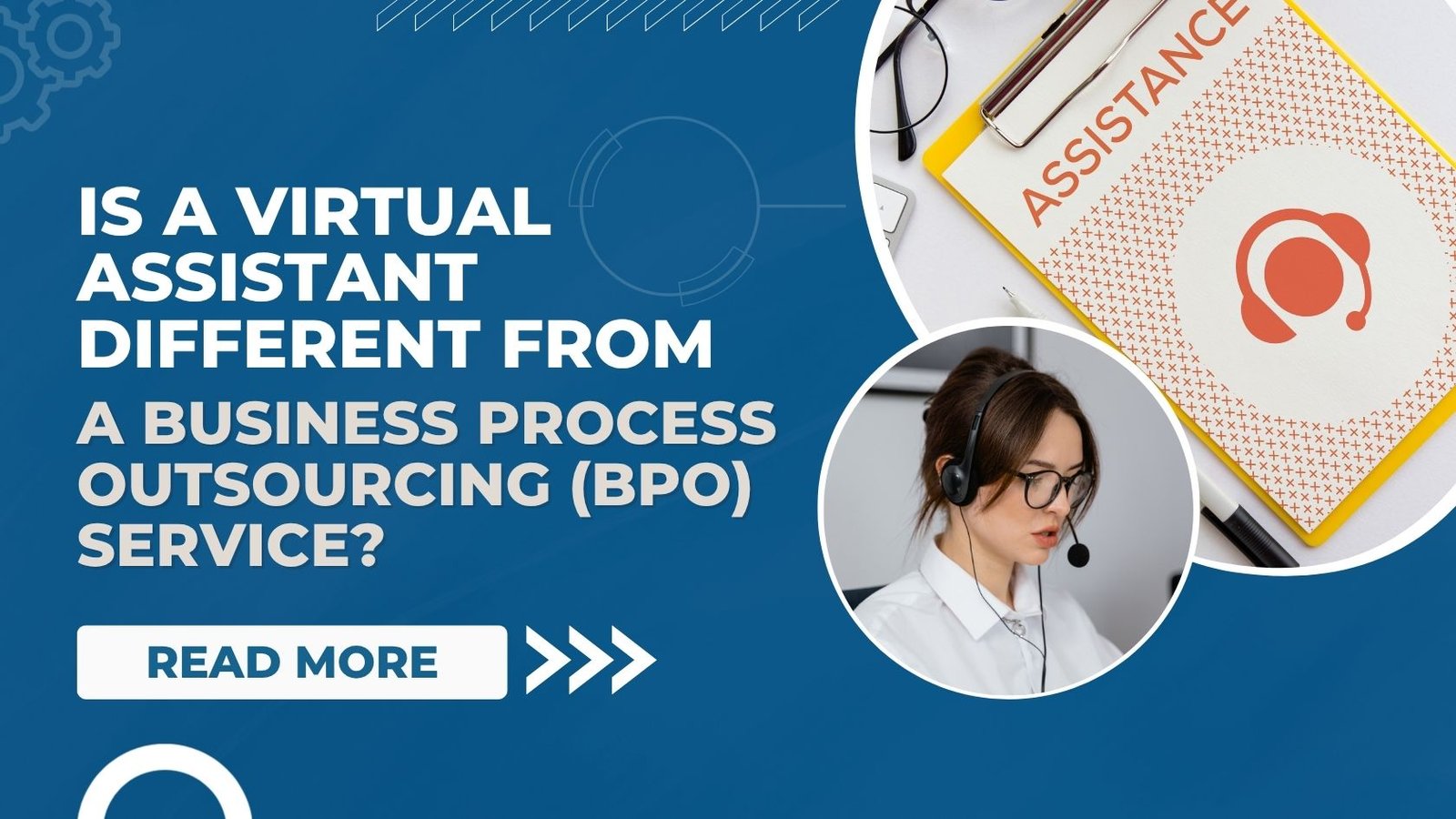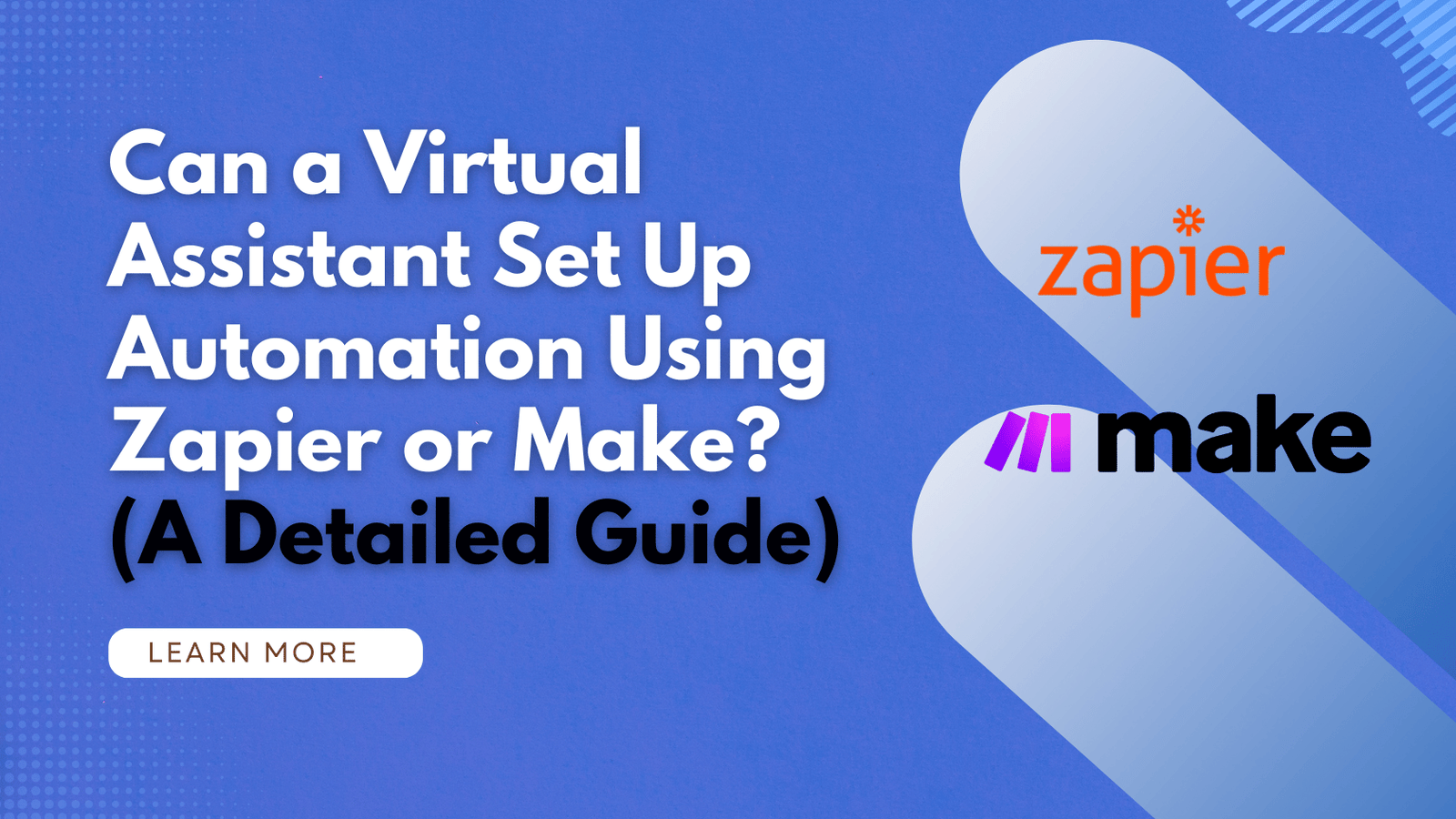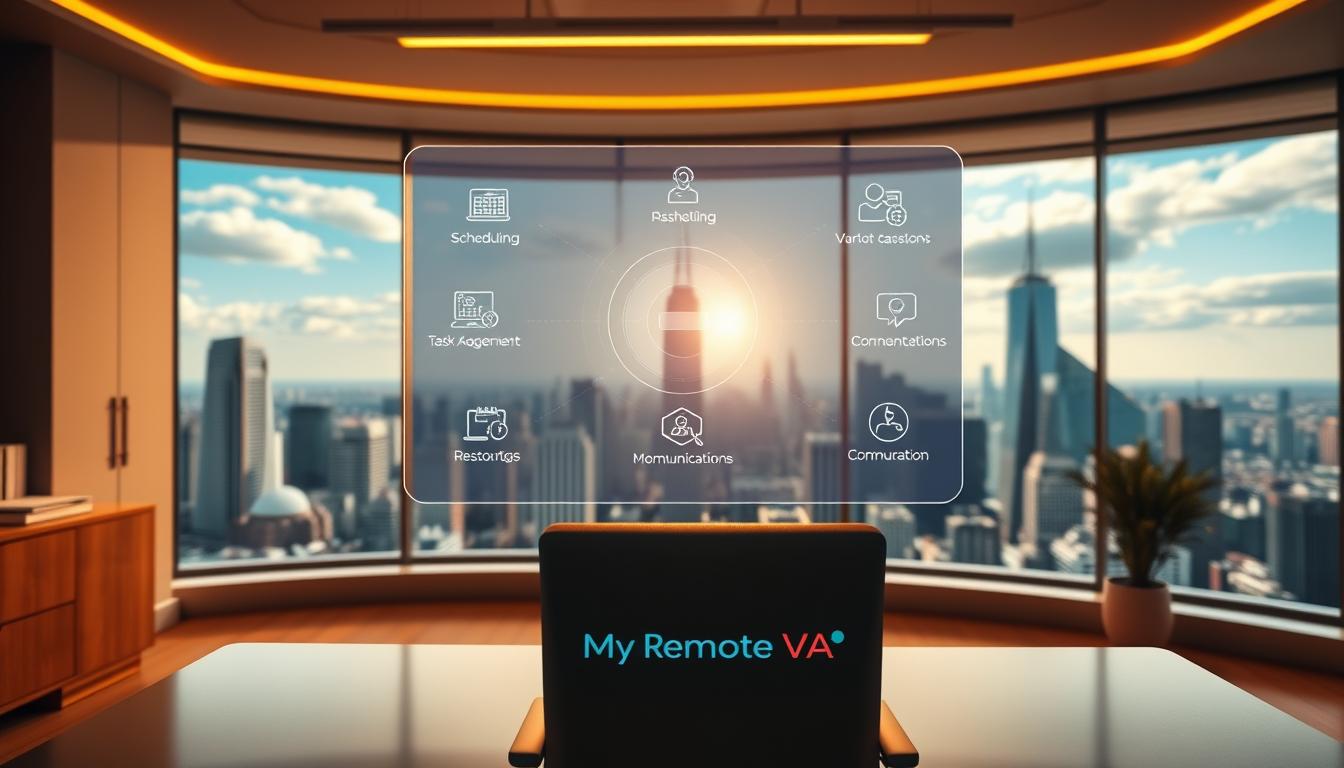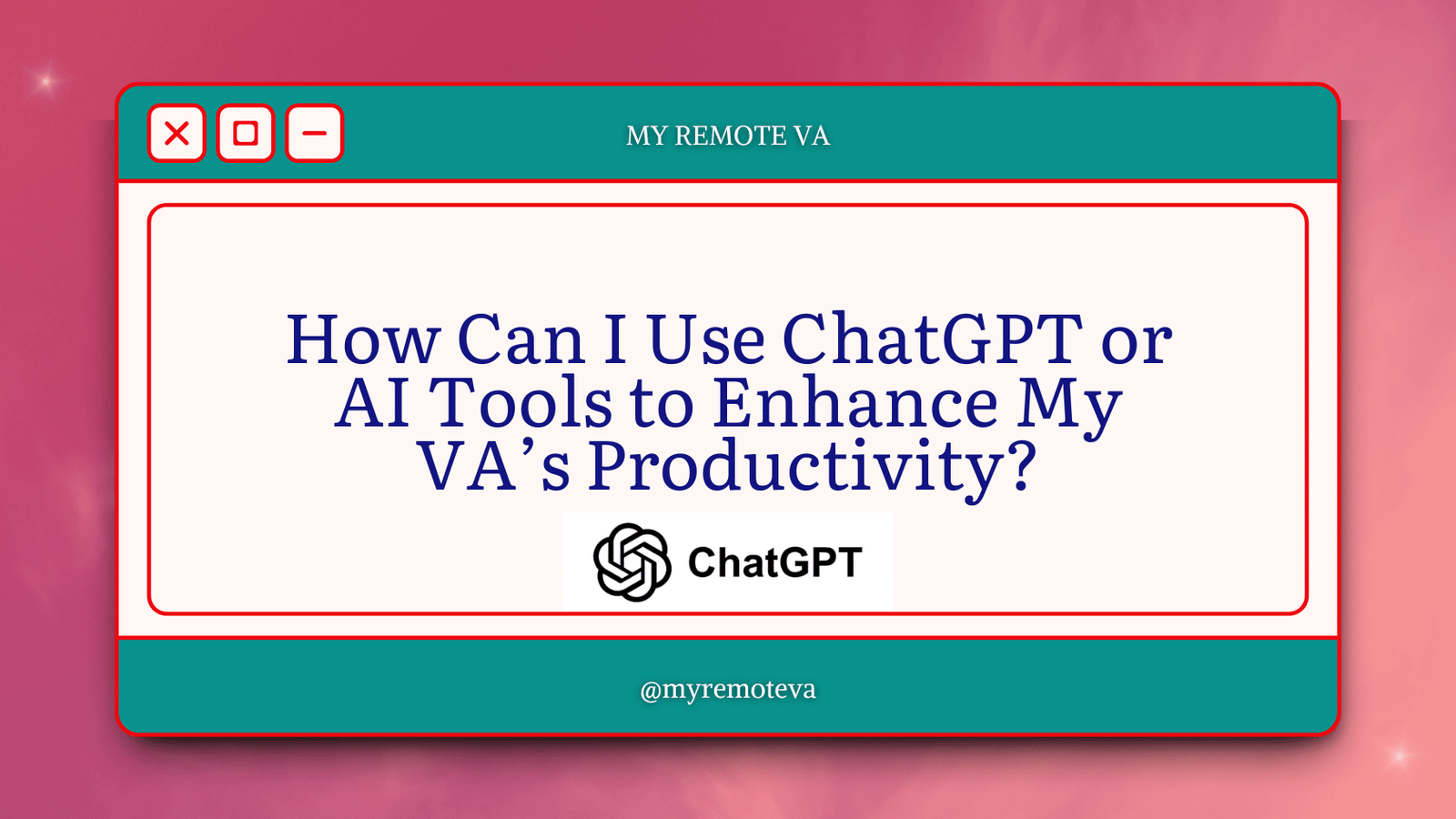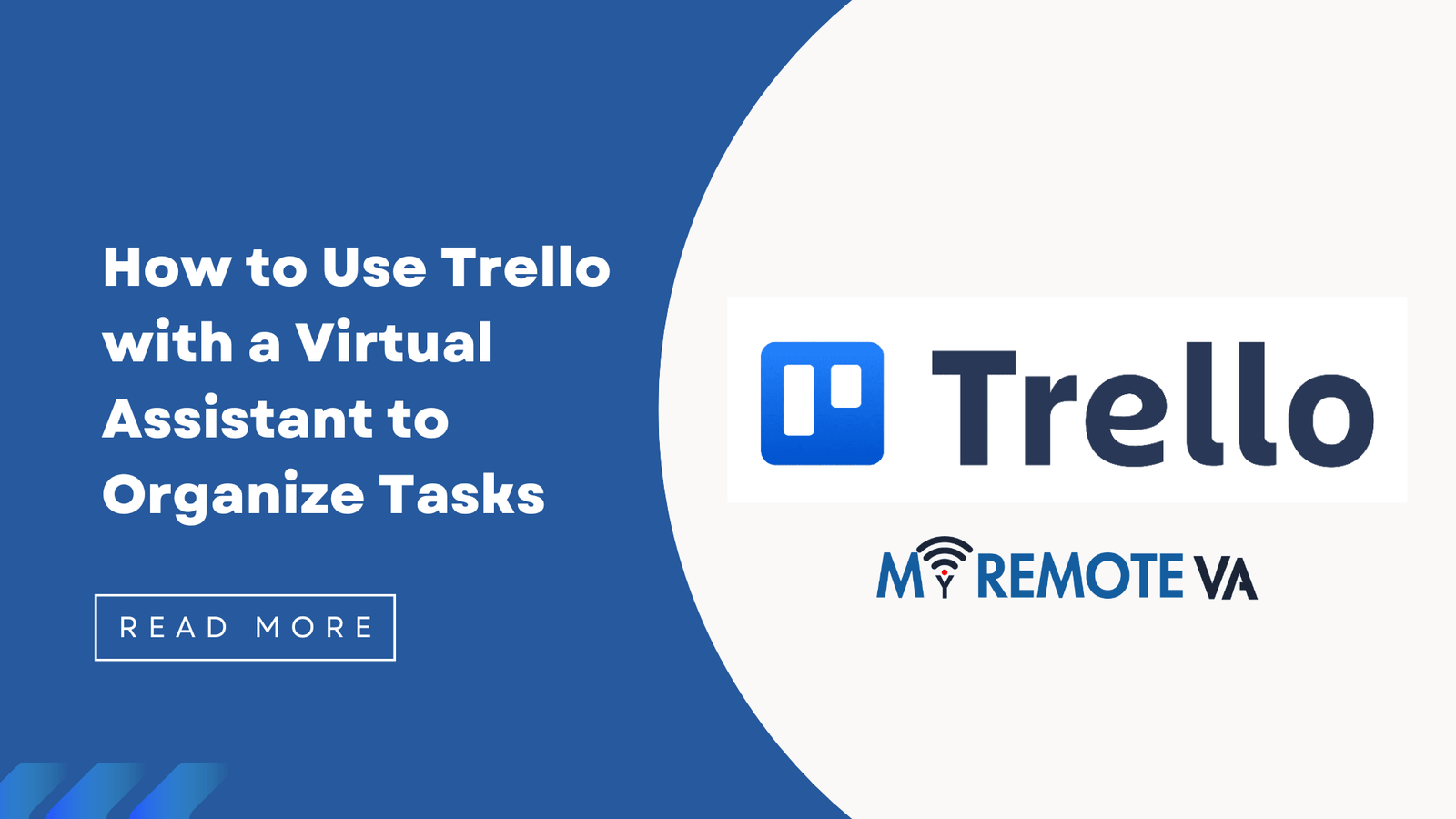Is a Virtual Assistant Different from a Business Process Outsourcing (BPO) Service?
While both virtual assistants (VAs) and Business Process Outsourcing (BPO) services involve delegating tasks to external parties, key distinctions exist. Understanding these differences is crucial when deciding which option best aligns with your specific needs and business goals.
- Is a Virtual Assistant Different from a Business Process Outsourcing (BPO) Service?
- Introduction: Understanding the Core Differences
- Virtual Assistant (VA) Services: A Closer Look
- Business Process Outsourcing (BPO): A Strategic Approach
- Key Differences: VA vs. BPO
- Recent Market Signals (USA, UK, New Zealand, Singapore, Australia, UAE - Last Month)
- Choosing the Right Solution: VA or BPO?
- Conclusion: Complementary Services
- FAQ - Frequently Asked Questions
Scope and Focus
Virtual Assistants: Typically focus on specific administrative, technical, creative, or customer support tasks. VAs often integrate directly into your workflow, acting as an extension of your team. Think of delegating administrative tasks, managing social media, or providing personalized customer support.
Business Process Outsourcing (BPO): Encompasses a broader range of business functions that are outsourced, such as customer service, data entry, or even entire departments like accounting or IT. BPO often involves larger teams and more structured processes.
Team Structure and Management
Virtual assistant services, like the model many independent VAs follow, often allow for more direct interaction and control over the individual performing the tasks. They can become ingrained in the team.
BPO operations often have their own management structure and processes. Communication and control are maintained through the BPO provider’s management team.
Flexibility and Scalability
VA services often offer flexible plans, allowing you to scale up or down based on your current needs. Options might include hourly, monthly, or project-based arrangements.
BPO contracts can sometimes be less flexible, requiring longer-term commitments and potentially limiting your ability to quickly adjust resources.
Introduction: Understanding the Core Differences
The terms “Virtual Assistant” (VA) and “Business Process Outsourcing” (BPO) are often used interchangeably, but they represent distinct approaches to delegating tasks and responsibilities. Understanding the core differences between them is crucial for making informed decisions about your business needs.
While both involve outsourcing work to external parties, the scale, scope, and level of control differ significantly. A Virtual Assistant typically works on a more individualized basis, handling a variety of tasks that directly support a specific person or team. Think of it as an extension of your existing team, offering flexible support for administrative, technical, creative, or marketing tasks.
BPO, on the other hand, usually involves outsourcing entire business processes to a third-party provider. This could include customer support, data entry, or even accounting functions. BPO providers often operate on a larger scale and may have specialized expertise in specific industries.
Key Distinctions: Focus and Scale
One key difference lies in the focus. VAs provide personalized and flexible support, often adapting to evolving needs. For instance, expert virtual assistant support is available for startups, founders, agencies, and busy professionals through flexible hourly and team-based plans. You can delegate admin, tech, customer support, marketing, creative tasks, or executive work. A Dedicated Supervisor manages your VA, shift, processes, and reporting so you don’t have to.
BPO is more about streamlining specific business operations for efficiency and cost reduction. The commitment with a BPO is often longer term.
Plans and Commitment
VA services often offer flexible hourly monthly plans (e.g., 5, 10, 20, 30 hours) or dedicated plans (e.g., 80 hours, 160 hours, or multi-VA setups). This allows businesses to scale their support up or down as needed. Some even offer free trials or entry-level plans to get started.
BPO agreements tend to be more formal, with defined contracts and service-level agreements (SLAs) outlining the expected performance and deliverables.
Virtual Assistant (VA) Services: A Closer Look
The terms “Virtual Assistant” (VA) and “Business Process Outsourcing” (BPO) are often used interchangeably, but they represent distinct approaches to offloading tasks and responsibilities. Understanding the nuances between them is crucial for making informed decisions about your business needs.
What is a Virtual Assistant?
A Virtual Assistant is typically an independent contractor or a professional working remotely who provides administrative, technical, or creative assistance to clients. VAs often handle a wide range of tasks, providing flexible support based on specific needs. Common VA tasks include:
- Administrative Support (calendar management, email filtering)
- Technical Tasks
- Customer Support
- Marketing Assistance
- Creative Tasks
- Executive Assistance
The key benefit of using a VA lies in its flexibility and scalability. You can engage a VA for specific projects or on a retainer basis, adjusting the level of support as your business evolves. VAs often offer specialized skills, allowing you to tap into expertise without the overhead of hiring a full-time employee.
What is Business Process Outsourcing (BPO)?
Business Process Outsourcing, on the other hand, involves contracting out specific business processes to a third-party provider. These processes are often, but not always, located overseas. BPO typically focuses on larger-scale operations, such as customer service call centers, payroll processing, or data entry. The focus is frequently on cost reduction through economies of scale and lower labor costs.
Key Differences Summarized
In essence, the primary difference lies in the scope and nature of the work being outsourced. VAs offer more personalized, flexible, and often specialized support, whereas BPO focuses on standardized processes and cost efficiency. The level of control and direct interaction with the service provider also differs. With VAs, clients typically have more direct communication and oversight, while BPO involves managing a contractual relationship with a larger organization. Choosing between a VA and BPO depends on the scale, nature, and complexity of your business needs.
Many companies now offer expert virtual assistant support. This support often benefits startups, founders, agencies, and busy professionals through flexible hourly and team-based plans. You can delegate admin, tech, customer support, marketing, creative tasks, or executive work. Some services offer a Dedicated Supervisor who manages your VA, shift, processes, and reporting so you don’t have to. These offerings come in hourly monthly plans or dedicated team plans, allowing you to scale as needed.
Business Process Outsourcing (BPO): A Strategic Approach
Business Process Outsourcing (BPO) involves contracting out specific business tasks or processes to a third-party provider. This can encompass a wide range of functions, from customer service and technical support to data entry and finance. The primary goal of BPO is often to reduce costs, improve efficiency, and allow the company to focus on its core competencies.
Unlike hiring a virtual assistant for specific, often individualized tasks, BPO typically involves handing over entire departments or processes. For example, a company might outsource its entire customer service department to a BPO provider specializing in call centers and customer support.
BPO vs. Focused Task Delegation
BPO solutions are usually project or department based. Companies might choose to outsource their entire IT infrastructure management to a BPO provider, gaining access to specialized expertise and infrastructure without the need to hire and train an in-house team. In contrast, using virtual assistant services is a more focused delegation of tasks, often without handing over an entire department. The services can include administrative support, creative tasks or marketing tasks.
While both VAs and BPO can offer cost savings and improved efficiency, the scale and scope of each approach differ significantly. BPO is generally a larger, more comprehensive undertaking, whereas virtual assistance offers greater flexibility and control over individual tasks and projects.
Key Differences: VA vs. BPO
While both Virtual Assistants (VAs) and Business Process Outsourcing (BPO) offer outsourced services, they differ significantly in scope, structure, and focus. Understanding these distinctions is crucial when deciding which solution best suits your needs.
Scope of Services
VAs typically handle a diverse range of tasks, often providing personalized and specialized support. This can include administrative work, technical tasks, customer support, marketing assistance, creative projects, and even executive-level support. A VA’s role is often more flexible and adaptable to the client’s immediate needs. They can manage tasks like scheduling appointments, managing social media, creating presentations, handling customer inquiries, or providing technical assistance, offering flexibility with hourly monthly plans to delegate specific tasks.
BPOs, on the other hand, usually focus on specific, well-defined business processes, such as customer service, data entry, or payroll processing. They often involve larger teams and standardized procedures. The goal is typically to streamline and optimize these processes for efficiency and cost savings.
Structure and Management
VAs often operate as independent contractors or through VA agencies. They tend to work autonomously, requiring minimal direct supervision. Having a dedicated supervisor can further enhance the VA’s effectiveness, ensuring quality control, process adherence, and efficient reporting.
BPOs typically have a more structured organizational hierarchy. They operate as larger companies with defined roles, responsibilities, and management structures. Clients often work with a dedicated account manager who oversees the BPO’s services.
Flexibility and Scalability
VAs often provide greater flexibility and scalability. Their skills and availability can be easily adjusted to meet changing business needs. This makes them ideal for startups, small businesses, and individuals with fluctuating workloads. They can offer curated hourly monthly plans to scale support up or down as needed.
BPOs may be less flexible due to their standardized processes and team structures. While they can scale to handle larger volumes of work, adapting to specific requirements or quickly changing priorities can be more challenging.
Cost Considerations
The cost structures of VAs and BPOs also differ. VA services are often billed on an hourly or project basis, making them cost-effective for specific tasks or short-term needs. Monthly plans offer predictable budgeting for ongoing support.
BPOs typically charge based on a service-level agreement (SLA) or a per-transaction basis. While this can provide cost savings for high-volume processes, it may not be as cost-effective for smaller or more specialized tasks.
Recent Market Signals (USA, UK, New Zealand, Singapore, Australia, UAE – Last Month)
The interest in outsourcing solutions, specifically the distinction between Virtual Assistants (VAs) and Business Process Outsourcing (BPO), remains strong across various global markets. Last month, the USA, UK, New Zealand, Singapore, Australia, and UAE showed consistent demand for both options, but with nuanced preferences based on business needs.
In general, smaller businesses and startups are increasingly drawn to the flexibility and cost-effectiveness offered by VAs. The appeal lies in the ability to delegate specific tasks, such as administrative work, tech support, customer service, marketing, and creative projects without the overhead of full-time employees. This is especially relevant for businesses operating with lean budgets and needing to scale quickly.
BPO, on the other hand, tends to be favored by larger organizations seeking to outsource entire business functions, such as customer support centers or payroll processing. The focus here is on achieving economies of scale and leveraging specialized expertise for complex, standardized processes.
Key Trends Observed Last Month:
- Increased demand for specialized VA services: Businesses are looking beyond general administrative support and seeking VAs with expertise in specific areas like digital marketing, social media management, and technical writing.
- Growing popularity of hybrid solutions: Companies are combining VA services with internal teams to optimize efficiency and cost-effectiveness. They might use VAs for day-to-day tasks and internal teams for strategy.
- Focus on data security and compliance: Regardless of whether they choose a VA or BPO provider, businesses are prioritizing data security and compliance with relevant regulations. This is particularly important in sectors like finance and healthcare.
The choice between a VA and BPO ultimately depends on a company’s size, budget, and specific needs. VAs offer flexibility and personalized support, while BPO provides economies of scale and expertise for standardized processes.
Choosing the Right Solution: VA or BPO?
Deciding between a Virtual Assistant (VA) and a Business Process Outsourcing (BPO) solution can be crucial for your business growth. Both offer external support, but they differ significantly in scope, focus, and management style.
Understanding the Core Differences
The key difference lies in the scale and specialization. A BPO typically handles entire business processes, often involving a large team dedicated to specific functions like customer service or data entry. They frequently work with established processes and aim for efficiency and cost reduction through standardized procedures. They manage complete business function and often require long-term contracts.
On the other hand, a Virtual Assistant provides more flexible and personalized support. VAs are often individuals or small teams offering a broader range of skills and are ideal for tasks that require adaptability, creativity, and a more hands-on approach. Virtual assistants can take on admin, tech, customer support, marketing, creative tasks, or executive work. VAs are ideal for startups, founders, agencies, and busy professionals.
When to Choose a VA
A Virtual Assistant is often the best choice when you need:
- Flexible, on-demand support for a variety of tasks.
- A personalized approach with adaptable skills.
- Help managing tasks that require creativity, initiative, and problem-solving.
- Project-based assistance or support for specific initiatives.
- Support for startup, founders, agencies, and busy professionals.
For example, if you require assistance with social media management, content creation, or administrative tasks, a VA provides a cost-effective and scalable solution. They can adapt to your specific needs and company culture, becoming an integral part of your team.
When to Choose a BPO
A BPO is more suitable when you need:
- To outsource an entire business function (e.g., customer service, payroll processing).
- To reduce operational costs through economies of scale.
- To leverage established processes and standardized procedures.
- For a long-term commitment to handle large-scale tasks or operations.
For instance, if you want to outsource your entire customer service department or your entire data entry operation, a BPO is a good choice.
Conclusion: Complementary Services
While distinct, Virtual Assistant (VA) services and Business Process Outsourcing (BPO) can be complementary. BPO often handles large-scale, standardized processes, while VA services offer personalized support for specific tasks and roles. The key difference lies in the level of customization and control.
For startups, founders, and busy professionals seeking flexible solutions, VA services can be particularly valuable. Imagine delegating administrative tasks, technical support, customer service, marketing activities, creative projects, or even executive-level support. A Dedicated Supervisor can manage the VA, their shift, the processes involved, and provide reporting, freeing up your time to focus on core business functions.
The right approach depends on your specific needs. If you require assistance with a broad range of tasks and value flexibility, a VA may be the better choice. If you have large-scale, well-defined processes to outsource, BPO might be more suitable.
Finding the Right Fit
Choosing between a VA and a BPO hinges on factors such as the size of your business, the nature of the tasks you need assistance with, and your budget. Some VA services offer curated Hourly Monthly Plans (e.g., 5, 10, 20, 30 hours) or Dedicated Plans (e.g., 80 hours, 160 hours, or multi-VA setups) to cater to different requirements. A free plan with task support and rollover benefits could be a good option to start.
FAQ – Frequently Asked Questions
Is a VA different from a BPO?
Yes, a Virtual Assistant (VA) and a Business Process Outsourcing (BPO) company are different, although there can be some overlap in the services they offer. The key differences lie in scale, focus, and level of customization.
What is a Virtual Assistant (VA)?
A Virtual Assistant is typically an independent contractor or part of a smaller agency who provides administrative, technical, creative, or personal assistance to clients from a remote location. VAs often work on a project-by-project basis or through flexible hourly arrangements.
Think of a VA as your on-demand support for tasks that are essential but time-consuming. You can delegate administrative tasks, tech support, customer service, marketing activities, creative projects, or even executive-level work.
What is Business Process Outsourcing (BPO)?
BPO, on the other hand, is the outsourcing of specific business tasks or processes to a third-party provider. BPO companies are generally larger organizations that handle entire departments or functions, like customer service, payroll, or IT support. They often work on long-term contracts and aim to optimize specific processes for their clients. While BPO may offer administrative assistance, it’s usually part of a larger, more structured service agreement.
Key Differences Summarized:
- Scale: VAs often operate independently or within smaller teams, while BPOs are larger organizations.
- Focus: VAs tend to offer a broader range of services and cater to individual needs, while BPOs specialize in specific business functions.
- Customization: VA services are often highly customizable, while BPO services may be more standardized.
- Flexibility: VA arrangements are usually more flexible and adaptable to changing needs, while BPO contracts are often long-term.
How Can I Benefit From Virtual Assistant Services?
Virtual Assistants can be a great resource for startups, founders, agencies, and busy professionals. You can delegate tasks that take up too much of your time, such as:
- Administrative tasks
- Technical support
- Customer support
- Marketing activities
- Creative projects
- Executive-level work
Many VA services provide a dedicated supervisor to manage the VA, their shifts, processes, and reporting. This ensures quality and frees up your time even further.

